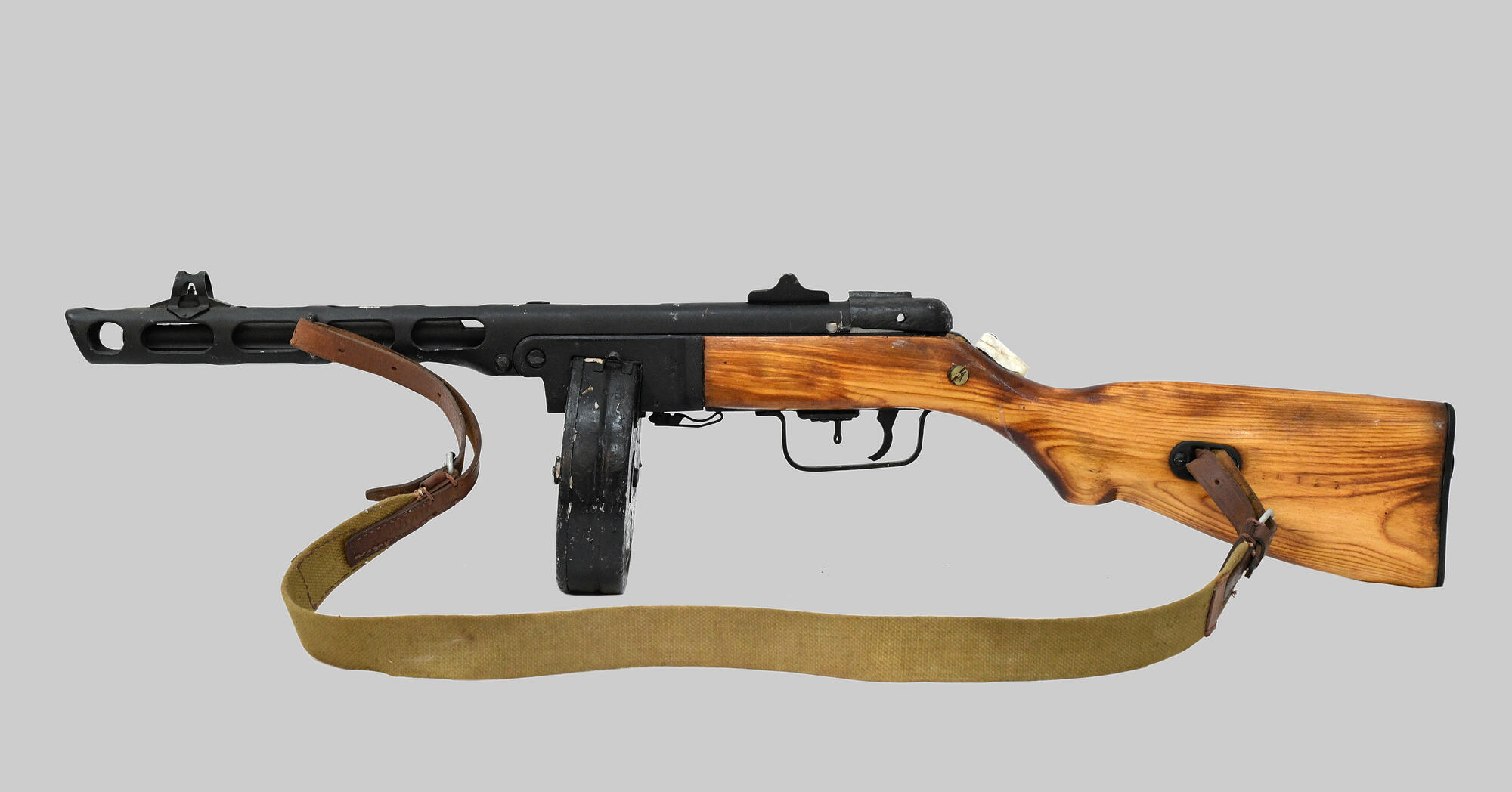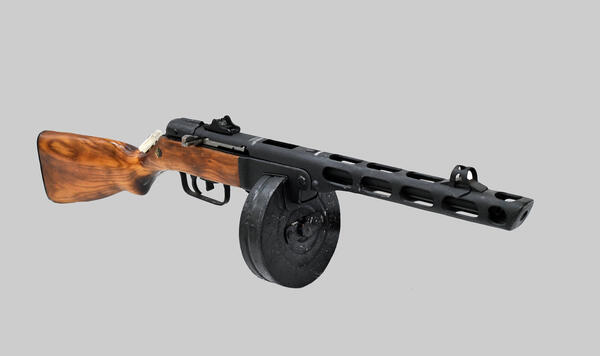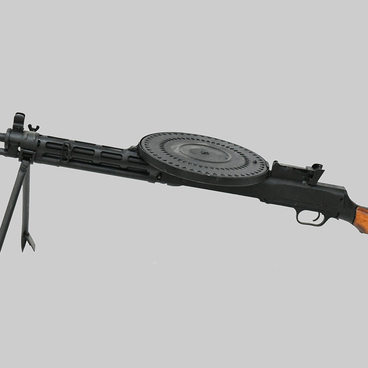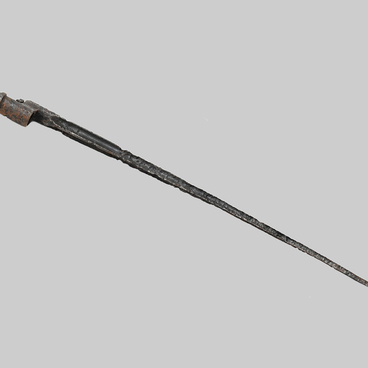The 7.62 mm submachine gun designed by Georgy Shpagin (PPSh) was developed and approved by the Red Army in late 1940. It was sometimes called the “burp gun” because of its high fire rate.
The Shpagin submachine gun was highly reliable and had a great rate of fire. During the Great Patriotic War, it became the most mass-produced automatic weapon. The reasons for such high demand were the gun’s outstanding firing range, ease of use and low production costs. In total, 6,000,000 PPSh-41 units were produced during the war.
The simplified design made it possible to assemble this type of weapon on non-core product lines, for example, tractor factories. The entire body of the gun was made of steel, and its stock was made of wood (mostly birch). Cold stamping and electric welding methods made the elements, which did not require manual after-treatment and were time saving.
Due to a high rate of fire of about 1000 rounds per minute, the cartridges were spent rapidly. Each soldier carried 3 loaded drum cartridges for a total of 223 rounds. The effective firing range was about 200 meters. This characteristic made the Shpagin submachine gun greatly superior to other similar weapons.
The Shpagin submachine gun with a drum magazine, as well as the Mosin’s rifle with a bayonet, became a symbol of the Soviet soldier during the Great Patriotic War. The image of the Soviet Liberator Soldier dressed in a field uniform, a helmet, a cape and armed with a Shpagin machine gun was embodied in many monuments across the USSR territory and Eastern Europe.
The Shpagin submachine gun was highly reliable and had a great rate of fire. During the Great Patriotic War, it became the most mass-produced automatic weapon. The reasons for such high demand were the gun’s outstanding firing range, ease of use and low production costs. In total, 6,000,000 PPSh-41 units were produced during the war.
The simplified design made it possible to assemble this type of weapon on non-core product lines, for example, tractor factories. The entire body of the gun was made of steel, and its stock was made of wood (mostly birch). Cold stamping and electric welding methods made the elements, which did not require manual after-treatment and were time saving.
Due to a high rate of fire of about 1000 rounds per minute, the cartridges were spent rapidly. Each soldier carried 3 loaded drum cartridges for a total of 223 rounds. The effective firing range was about 200 meters. This characteristic made the Shpagin submachine gun greatly superior to other similar weapons.
The Shpagin submachine gun with a drum magazine, as well as the Mosin’s rifle with a bayonet, became a symbol of the Soviet soldier during the Great Patriotic War. The image of the Soviet Liberator Soldier dressed in a field uniform, a helmet, a cape and armed with a Shpagin machine gun was embodied in many monuments across the USSR territory and Eastern Europe.



